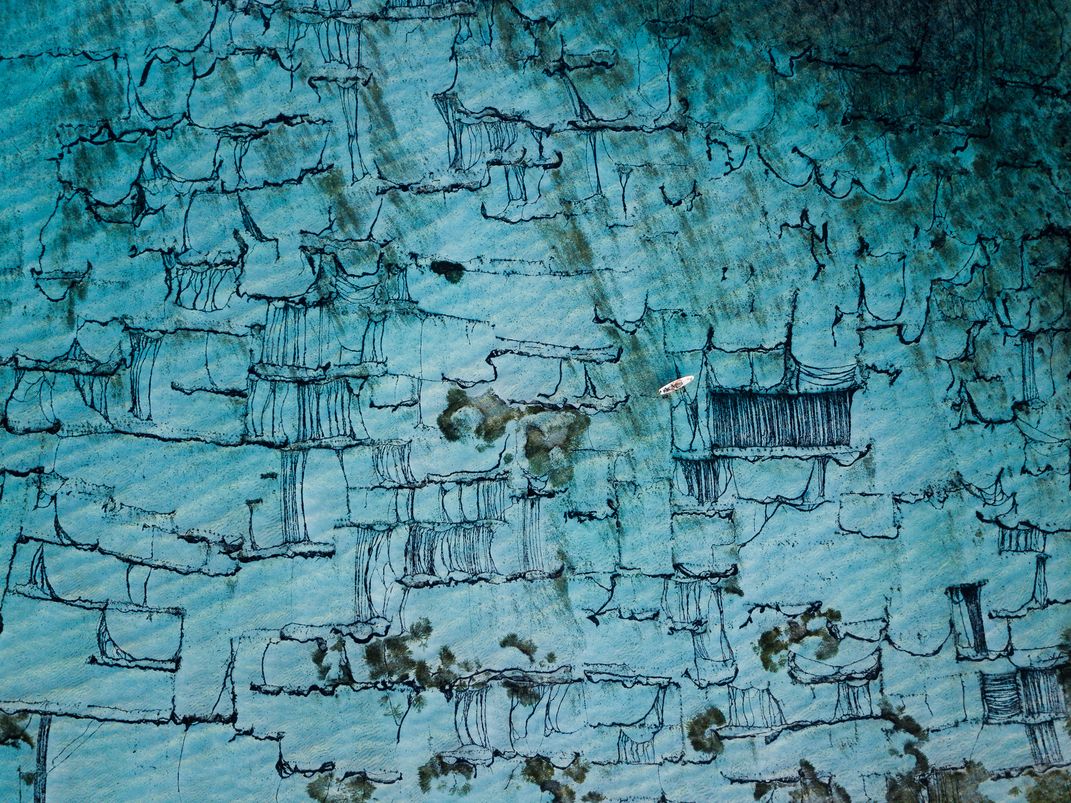This abstract aerial view tells the story of the dying traditional seaweed industry in the Balinese island- Nusa Lembongan. Seaweed farming was introduced to Lembongan in the 1980’s and for many years it used to be a staple income for many families around the island. Seaweed “farms” are basically square patches of seabed which are marked out by lines of bamboo pegs driven into the sand. Horizontal lines of string are tied from peg to peg creating numerous parallel lines. On these lines, the seaweed farmers tie small cuttings of seaweed. After a period of 6 to 8 weeks, these small cuttings are blooming and ready to be harvested. As an agricultural product, seaweed is remarkably efficient and environmentally friendly. It can grow to be a 10-foot plant in six weeks and requires very little labor between planting and harvesting. Seaweed absorbs fertilizer runoffs and carbon dioxide from the ocean, so it has the potential to restore dead ocean spots. But now, the industry appears to be at risk. In recent years a lot of the seaweed has been dying. Experts suspect that this is the result of climate change but the local people of Lembongan are blaming the tourism industry. In the last few years, the island has been quickly changing his face when more and more luxury resorts are being built along the coastline in order to provide an upscale getaway from the unbearable crowdedness of Bali. The tourism industry has an enormous impact on the environment, the marine ecosystems and on the traditional seaweed farms in particular. The pollution caused by the boats, combined with the waste and the landslides caused by the massive construction sites along the coast- are destroying the fragile conditions that are crucial for the seaweed industry.
| Date Taken: | 06.2018 |
| Date Uploaded: | 11.2019 |
| Photo Location: | Nusa Lembongan, Indonesia |
| Camera: | FC220 |
| Copyright: | © Sagi Roitfarb |

